Common violets, (Viola odorata), are a great, unassuming edible spring wild flower, but they have a lot more use than in a bouquet or as something to enjoy on a trail: you can eat them too.
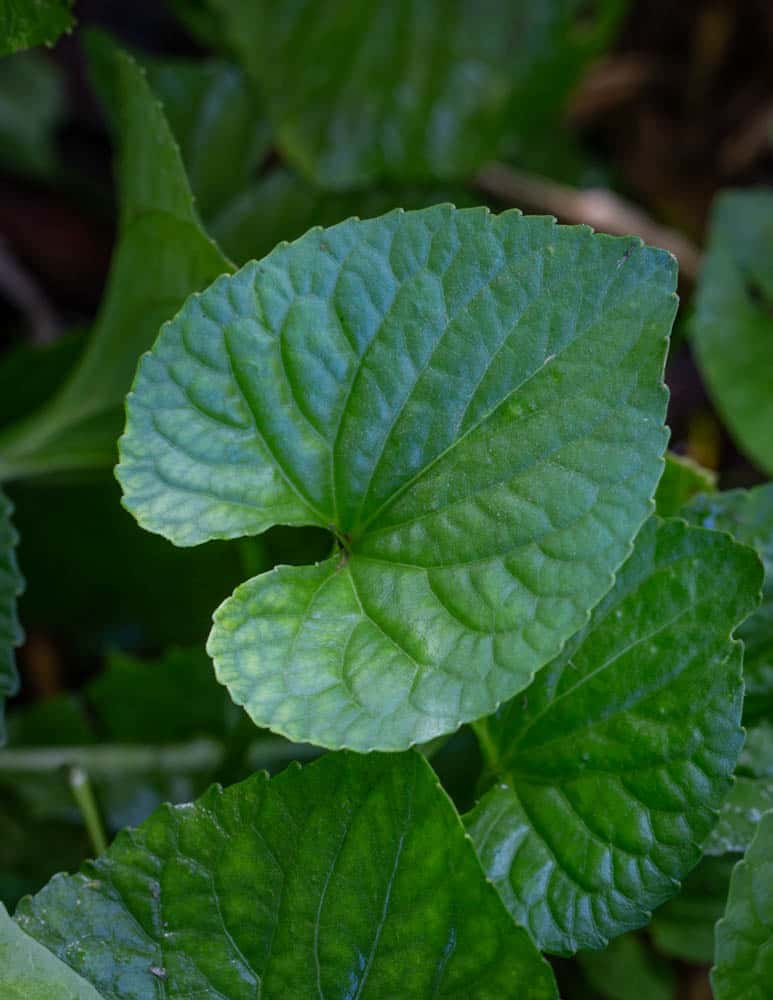
For me, foraging for violets is something I do in the spring, along with sochan, nettles, ramp leaves. They're easy to identify, don't really have any look-alikes to be worried about, and can be found just about everywhere, but generally I find violets grow in areas of partial shade, with rich soil.

I'll save you a little reading here and tell you that while, sure, both violet leaves and flowers are edible, but the part of the plant you really want to get to know are the heart-shaped leaves, which you can cook like any other leafy green.
Different species and colors
Violets can come in a wide variety of colors. I've eaten the greens and flowers of every one and never had any issues. The purple flowers are the most common I see.
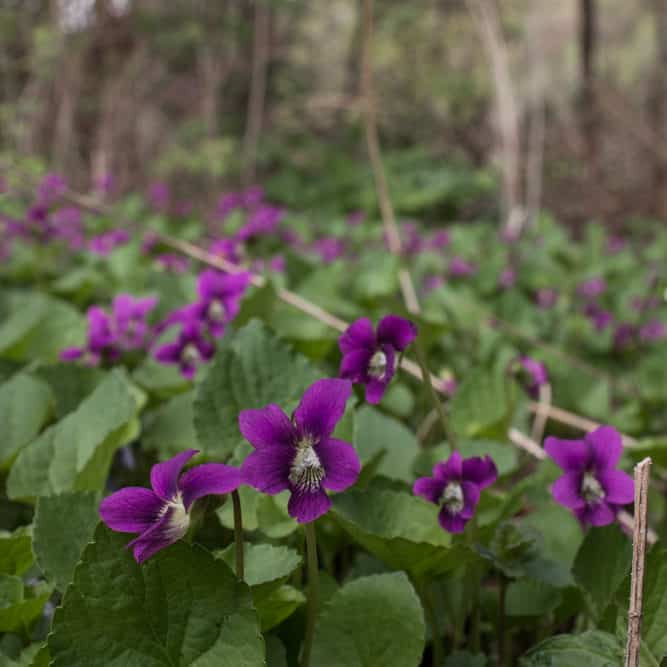
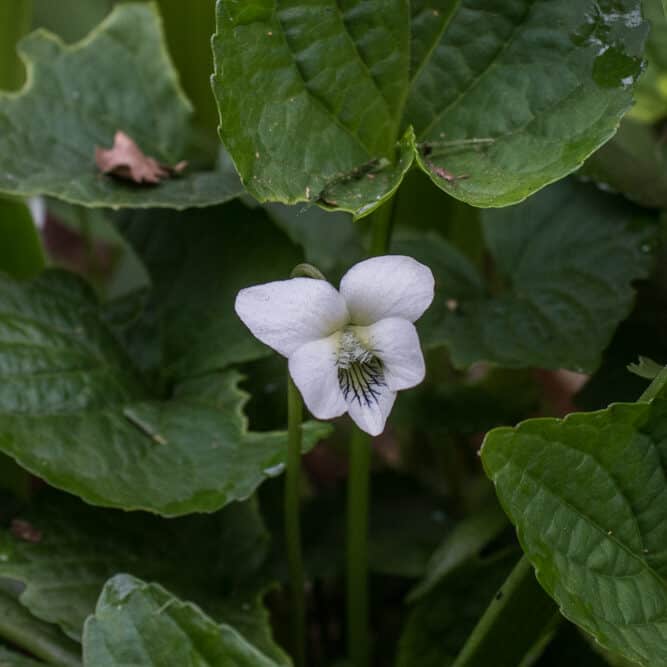
There's a whole slew of different colors you can collect, but the main wild one I see is purple. Some sources will say that yellow or white species are inedible.
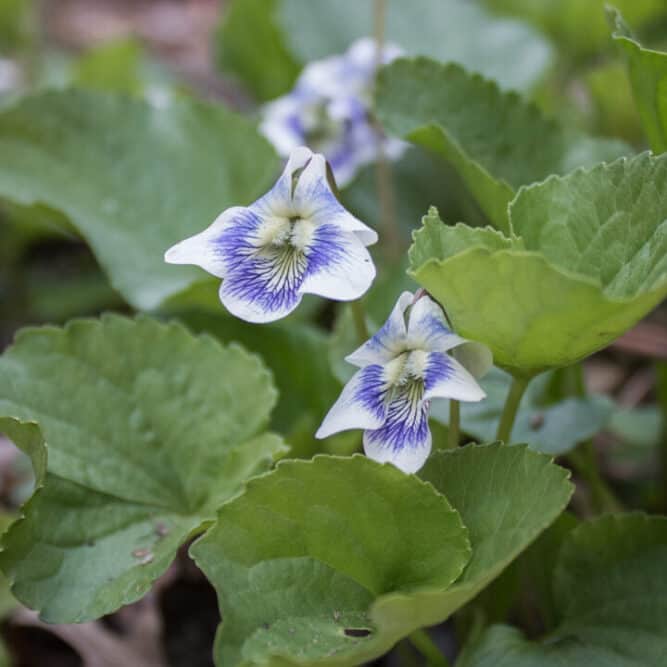
I haven't had any problem eating any of the species pictured here (as well as yellow species), tolerances can vary though, so I suggest sampling some of the other colors than the common blue violet in small amounts to make sure they sit well with you.
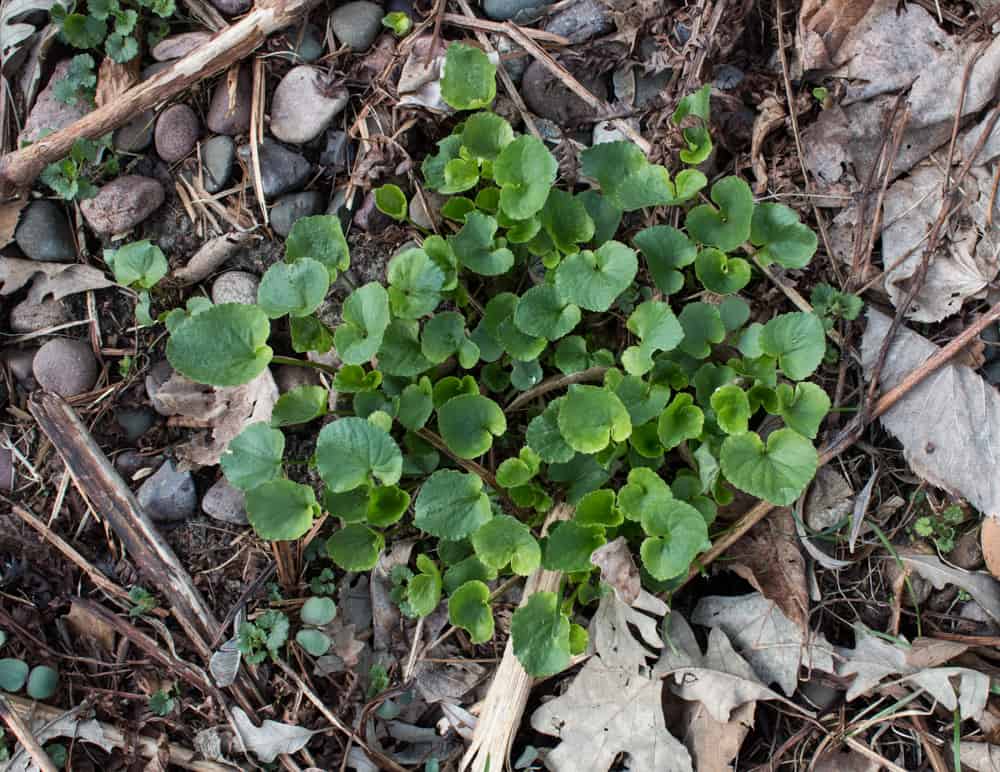
Harvesting
Violets are going to be at their best when they're young, like just about everything else. You can definitely eat them as the season moves on, but they start to get tough fast. Cooking or blanching older leaves is a good treatment, or making pureed or finely chopped leaves into soups.
Cooking
The only thing to know culinarily speaking about violets, from my opinion, is that they can be tough. They're not so tough that they aren't good to eat, when very young they're excellent, but they get chewier faster than many other greens, from my experience.
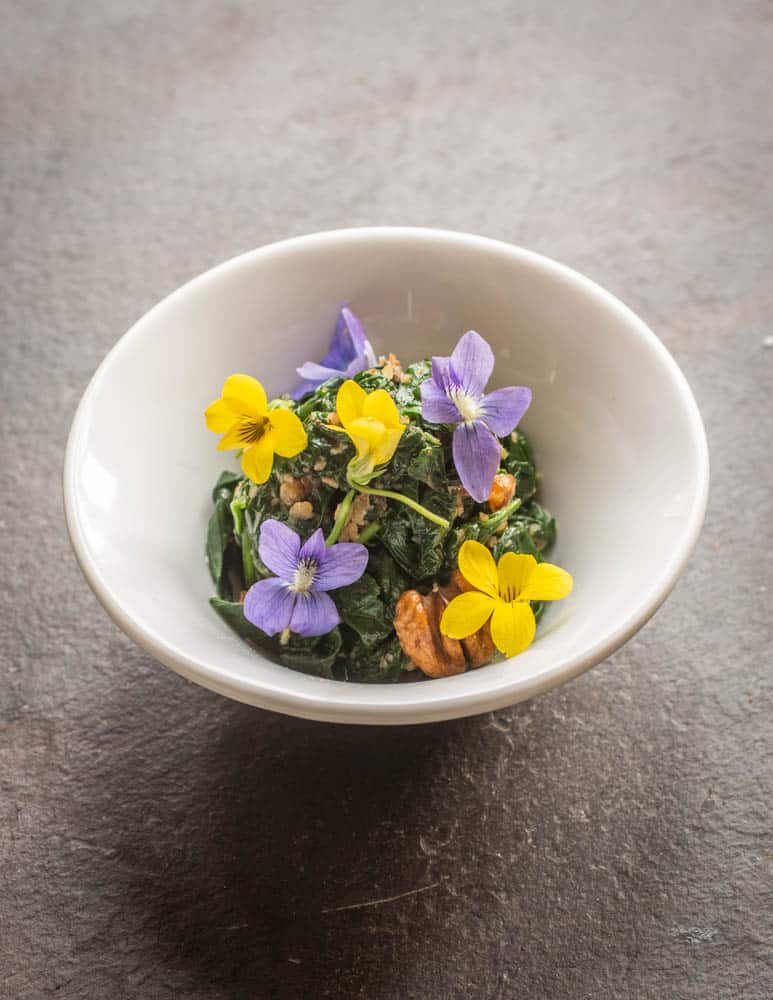
Given that, most of the time when I collect violet greens, they're going to be cooked, but when they're very young I might put them in a salad.
Even young, the leaves are a little textural, but mixed in with some other wilting greens, and maybe a little lard or bacon fat, no one will be the wiser, and you can feel good about serving a healthy green that most people only appreciate with their eyes.
A wild substitute for spinach, kinda
Lots of comparisons get made between wild cooked greens and spinach, plantain and nettles for example, and to an extent I can agree with nettles (I don't care for plantain leaves). Violets are another story.
After cooking, young violet leaves can get quite tender and soft. They're one of the best wild approximations to spinach I've had. Like plants in the Malvaceae, they'll be a bit slippery after cooking (for clarity, violets are in Violaceae).
Mix with other greens
Another tip for success here is knowing that the smooth, silky texture of cooked violets that I, and many people around the world that eat Malvaceae and similar plants enjoy may not be for everyone. To get around the texture, if you find it an issue for you, or eaters at your house, try cooking them in combination with other greens or pureeing them into a soup.
Violets also lose a lot of volume compared to other greens too, so making a blend of greens that's, say, half lambs quarters and half violets, of half nettles and violets can be a great compromise and a good way to sneak a new green into people's diets.
Flowers
As far as edible flowers go, they have a great smell, but, like most flowers, they're going to wilt pretty fast, and have a short shelf life.
There are methods for preserving them to enjoy throughout the year, the most popular being making violet syrup, or candying by dipping in beaten egg white, dipping in sugar and dehydrating.
Candied, or very fresh, the make a great garnish for cakes and sweets for special occasions. Mostly I just eat the greens.
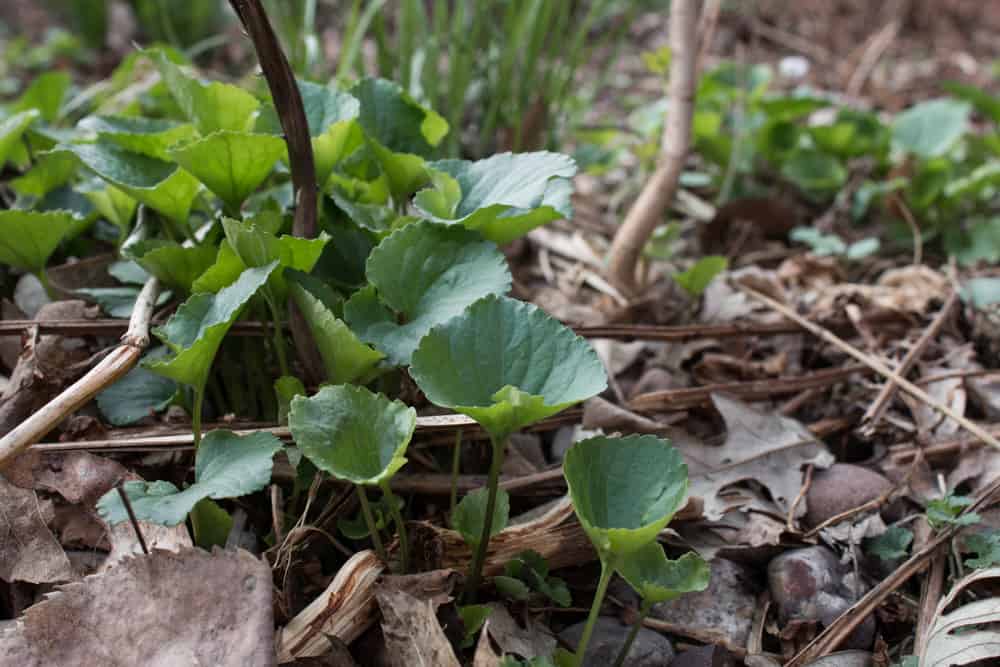
Violet Stem Sensitivity
Like a number of wild foods, lily shoots for example, some parts of the plant can cause a mild reaction with some people.
While I was eating a large amount of these raw, I found, that with violet stems in particular, I'm one of those people. I can eat violet leaves raw in salad as much as I like, but eating stems (which are tough anyway) made my throat hot and uncomfortable, a mild sensation that lasted for about 30 minutes.
I assume more people will have a sensitivity like this, but considering the fact that violet stems are not very appealing raw, I don't see much to worry about with them. Cooked I can eat the stems just fine. This could be due to the amount of saponins in the stems, but I'm speculating a bit there.
Violet Greens Gomae (Japanese Violet Salad)
Equipment
- 1 3 quart pot for blanching
- 1 mixing bowl
Ingredients
- 2-3 tablespoons nuts or seeds pumpkinseeds, sesame seeds, etc (refer to my suggestions in the post)
- 1 tablespoon soy or equivalent
- 1 tablespoon oil from the same nuts
- 1 tablespoon maple syrup
- 8 ounces fresh violet greens with minimal amounts of stem
Instructions
- Blanch the greens in boiling salted water until just tender, then shock in an ice bath and squeeze dry. Alternately, you can steam them until they're tender and taste good to you.
- Toast the nuts, then grind to a paste in a mortar and pestle, and stir in the remaining ingredients.
- Toss well with the greens, double check the seasoning, adjust as you see fit for salt and sugar, and serve, cool or at room temperature.

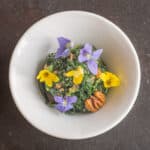
Teporah
Thank you for this great recipe. I really really love your page. I recently started eating violet leaves, because aphids got to my kale.
I have a lot of really tasty Walgreens that I’ve cultivated in my yard, and I’m really happy to have such abundance.
Alan Bergo
Hey Thanks Teporah.
Kelsey
I’ve read on multiple sources that only the leaves and flowers are edible, so having a reaction to the stems isn’t surprising. I hope you’re having a beautiful day though! The recipe sounds good by the way. 👍
Alan Bergo
The sensitivity I have only applies to the stems in their raw state, and I'd assume that would be the case with most people as these are in the Malvaceae, and every malva I know is edible. Cooked, their fine, albeit a bit tough.
eub
I'm betting it's calcium oxalate crystals in the stems. Do you get it with raw mature chard too?
Alan Bergo
I do not get it from chard. I do get the same thing from raw daylily pods sometimes. Also with some marigold species.
Jan Newton
Hi. I love violets. I made a violet with smoked gouda and Bosc pear salad that was really good and got featured in home and garden section of the Daily Press newspaper in Hampton Roads (Norfolk, Newport News, Williamsburg, VA Beach area). The recipe is here. Please feel free to share. I have a lovely photo, if you would like to use it.
Violet, Smoked Gouda and Pear Salad
Violet Leaves (raw, no stems)
Smoked Gouda Cheese, cut into bite-sized slices or chunks
Bosc Pears, cored, and sliced into wedges (peeling optional)
Violet Flowers
Clear Italian or Raspberry Vinaigrette Dressing
Place violet leaves on a plate and alternate chunks of gouda with pear wedges in a random design or in a starburst shape coming from the middle. Place violet flowers to add color and slight Iceberg lettuce taste to the salad. Dress with clear Italian or Raspberry Vinaigrette . Voila, a gourmet salad!
Alan Bergo
Sounds like a great salad Jan. 🙂